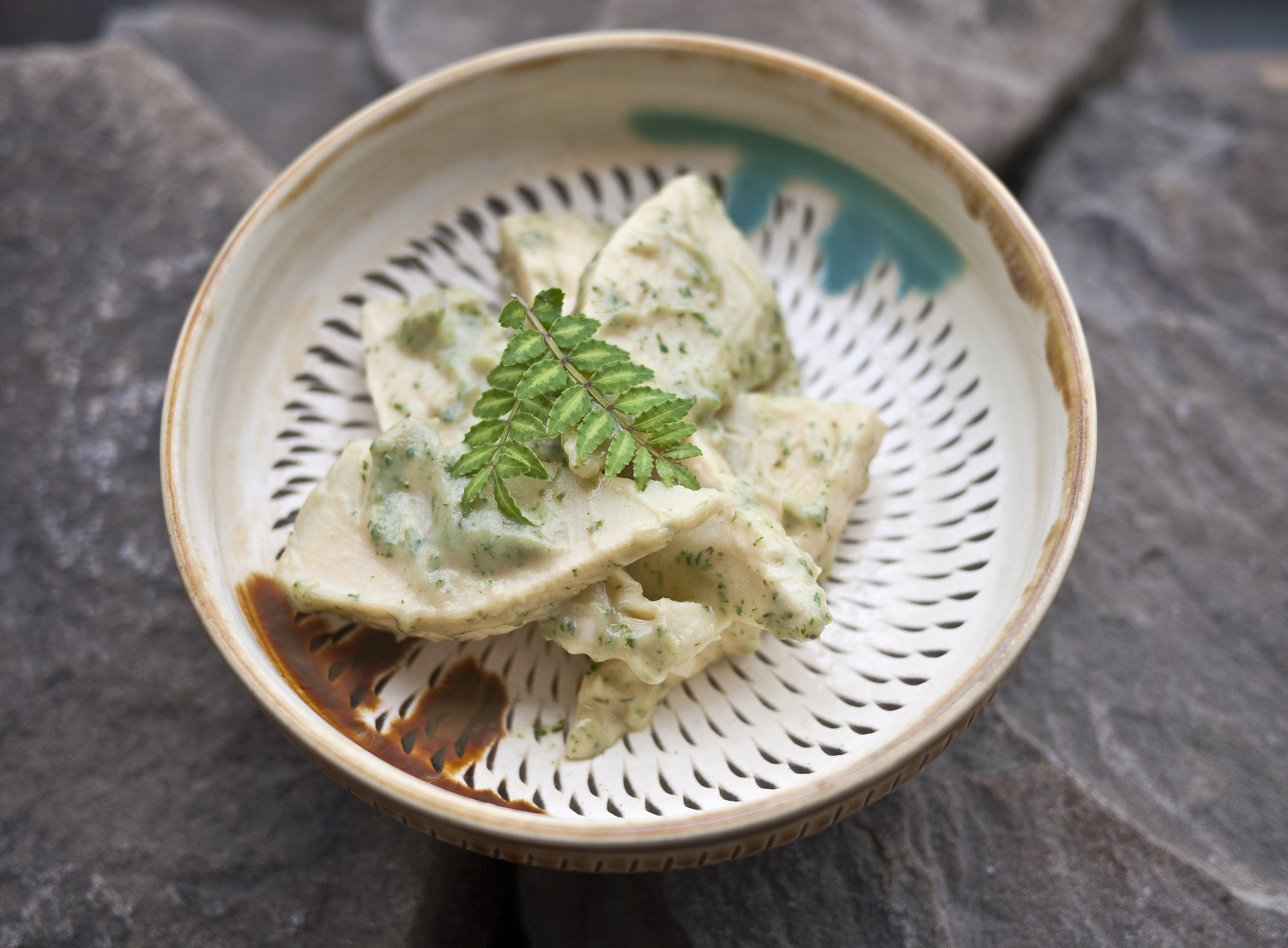In traditional Japanese cuisine, spiciness and zing are provided through yakumi garnishes — fragrant herbs, spices and vegetables added to a dish after it's plated. Not only do yakumi enhance the flavors and visual appeal of a dish, they're also believed to have health benefits such as aiding digestion — even the word "yakumi" literally means "medicine flavor." These garnishes are also used to emphasize seasonality, and the quintessential springtime yakumi is kinome, the young leaf clusters of the sanshō (Japanese pepper) tree.
The prickly-stemmed sanshō is a deciduous tree that's found growing in the wild throughout Japan with the exception of Okinawa. There's evidence that it has been used as food or for medicinal purposes for a long time; many earthenware pots from the Jomon Period (10,000-200 B.C.) have been discovered by archaeologists to contain sanshō seeds. Cultivation of these pepper trees did not start until the beginning of the 17th century, when a variety that yielded large, fragrant berries was imported from the Korean Peninsula to a place called Asakura in current day Hyogo Prefecture. Named the Asakura sanshō, this is still the main cultivated variety today. Large-scale sanshō tree farming was initiated during the Meiji Era (1868-1912). Incidentally, although sanshō (Zanthoxylum piperitum) is closely related to the Szechuan pepper (Zanthoxylum bungeanum, called kaboku-zanshō or hoa-jao in Japan), it's a different plant.
Three parts of the sanshō tree are used in cooking: the leaves, flower buds and berries. The flower buds and the green immature berries are preserved in salt or simmered in soy sauce, sugar, mirin and other flavors (i.e. made into tsukudani), and the mature seed husks are dried and ground into a spice powder called kona-zanshō, which is essential in Japanese cooking. The leaves, kinome, besides being used as a bright green garnish on grilled fish and meat, floated on soups and so on, are also ground up into a paste and mixed with miso to make a piquant sauce. There's a commonly held belief that holding a kinome leaf cluster between cupped hands and clapping the hands together is the best way to bring out its fragrance, although I've talked to several professional chefs who have said that was not necessarily done. In any case, bruising kinome leaves does help to release their oils.

















With your current subscription plan you can comment on stories. However, before writing your first comment, please create a display name in the Profile section of your subscriber account page.